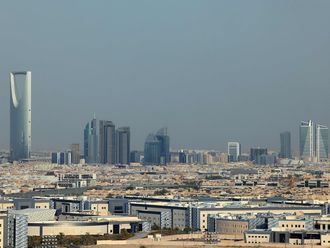There is a serious resource conflict brewing, one that threatens bottom-lines of hi-tech industries worldwide, and quite unsurprisingly, China is at the center of it. Control over rare earth elements, crucial to the very survival of next generation industries, is hotting up and much depends on how China rules the markets and dictates prices.
Rare earths are 17 minerals vital for manufacturing hi-tech and clean-tech products, ranging from smart phones and wind turbines to electric car batteries and missiles, not to mention flat-screen TVs and camera lenses.
China has just 23 per cent of rare earths deposits, but accounts for 96 percent of production. This week, it launched a physical trading platform for rare earth metals as part of its efforts to regulate the sector and strengthen its pricing power.
The rare earth trading platform located in remote Baotou, in north China’s Inner Mongolia region, was jointly formed by the Inner Mongolia Baotou Steel Rare-Earth Group, China’s biggest producer, and nine other companies, each holding 10-per cent stake in the exchange.
The trading platform is expected to provide clarity to the obscure and often secretive mining and trading process, but it is too early in the day to indicate if this forum will play any kind of effective role in stabilizing prices.
Slash and snare
The decision that will, however, inflame trade conflict comes not from the trading platform, but the central government’s renewed effort this week to streamline this sector and bring it under firm control.
The Ministry of Industry and Information Technology has made it compulsory that mines if they have to operate must have yearly output of at least 20,000 tons, while smelters must have production capacity of 5,000 tons per year.
Up to one-third of China’s 23 mines and about half of its 99 smelting companies will fail to meet the new standards and this would eliminate about 20 per cent of rare earths production capacity. The government also has limited the number of companies that are allowed to export rare earths.
These measures, far from reassuring, simply irked rare earth importers in the West who have been crying foul over rising prices and strained supplies. For the first half of 2012, the government cut export quota by 27 percent to 10,546 tons.
China’s rare earth output fell 36 per cent in the first seven, while July prices rose nearly double than what it was in the beginning of 2011.
Fears of restricted supply has already prompted United States, European Union and Japan to file complaints with World Trade Organisation in March accusing China of violating its free-trade commitments and controlling supplies.
These restrictions are especially sensitive at a time when Western governments are trying to boost their exports and increase sales of hi-tech goods that include products made with rare earths. These countries say export quotas and taxes push up rare earths prices abroad, giving manufacturers in China an unfair advantage.
For instance, the cost of Chinese restrictions has become exorbitant for users of lanthanum, a vital ingredient for catalytic converters used to clean tailpipes in conventional cars. Lanthanum, mostly produced in Baotou in Inner Mongolia, sells for less than $5,000 (Dh18,365) a ton in China and up to 10 times in the global market because of export restrictions.
For buyers of neodymium, a rare earth used to make lightweight, powerful magnets essential to everything from large wind turbines to gasoline-electric cars to iPhones, the going has been tough. Neodymium sells for about $40,000 (Dh146,916) a metric ton in China, and twice that much outside of the country.
China is now accused of taking immense advantage of this price gap within and outside its borders. Beijing’s ambition is to transform China from a low-wage factory to a hub of high technology and advanced goods and it doesn’t help when its leaders repeatedly urge hi-tech foreign companies to shift production to China and share technology with local partners.
Pushing back
China for the moment is caught in a precarious game. Its volume of production does not ensure its strength. In 2010, the US Energy Department had warned that the United States was too reliant on China for rare earth minerals, making clean energy industries vulnerable to disruptions in supply.
Beijing’s decision to limit exports since 2010 has prompted foreign producers to secure alternative sources and develop mines in California, Canada, Australia and Russia. Australian miner Lynas is completing the world’s largest refinery for rare earth metals in Kuantan, Malaysia.
The plant, which has the capacity to meet a fifth of the world’s demand, would help break China’s near monopoly on rare earths. China is running short on time, if not resources.











